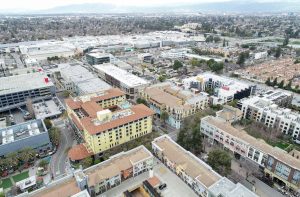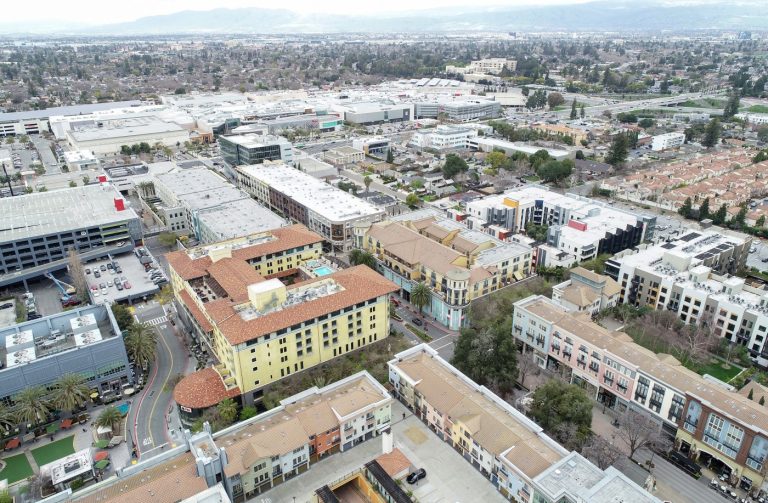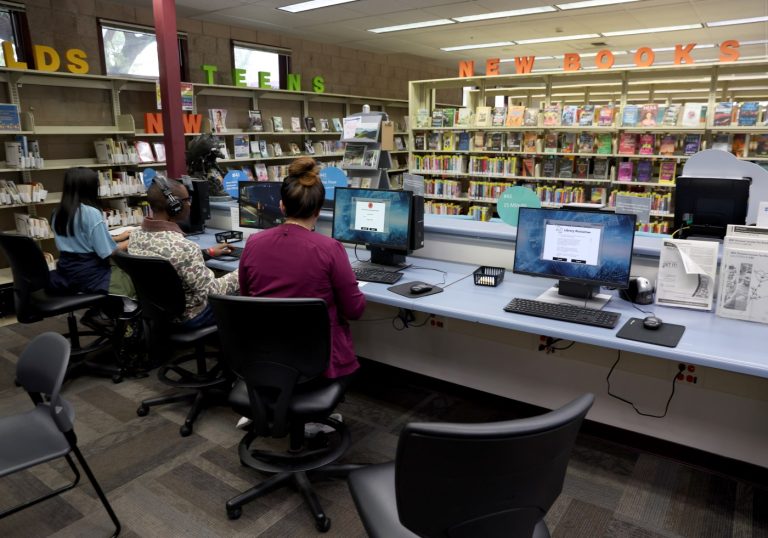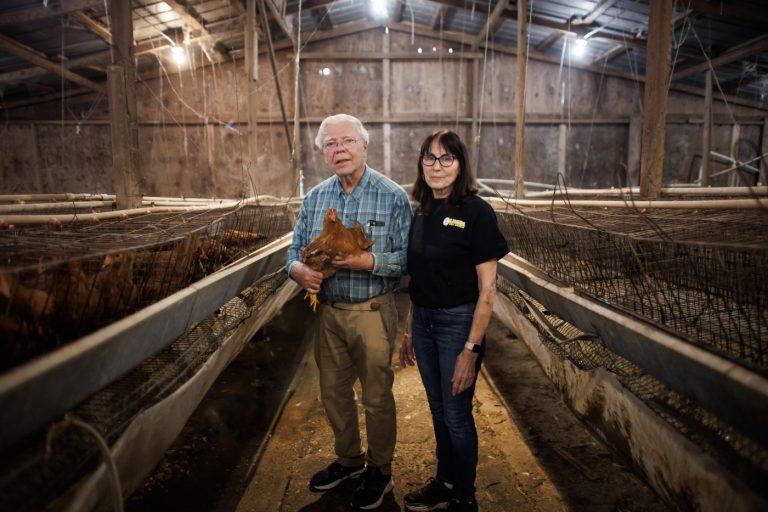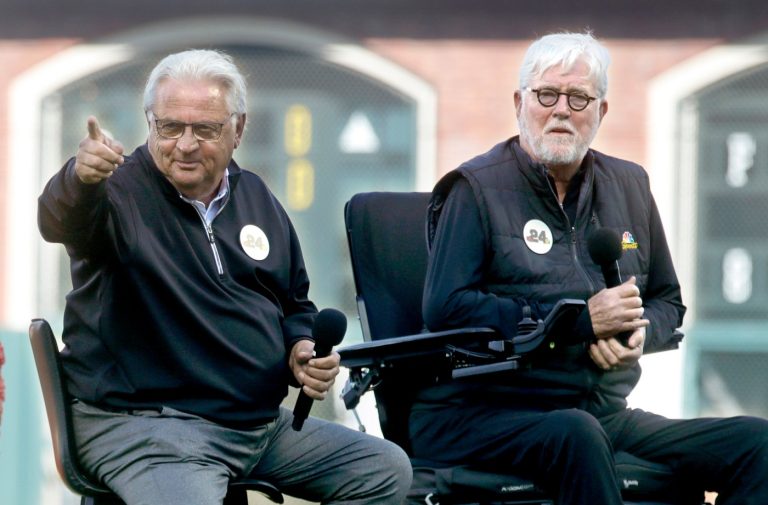Due west of O’Hare International Airport, there is a neighborhood — formally, part of Elk Grove Village — that isn’t much of a neighborhood. It’s warehouses, drab gray offices. It’s Gertrude Stein’s point about “no there there,” a place so devoid of character, you long for a big-box logo. Companies here use “Solutions” in their names. Also, “Logistics” and “Global.” Everyone seems to be hiding something yet it’s nothing you’d actually care about.
Still, next time you’re in the neighborhood, glance over at 1001 Busse Road, a towering block of a building that’s so long and large, its slate facade meshes into the cement sky.
A company of 500 employees here makes one of Chicago’s greatest exports: pinball.
Seth Davis is planning to erect a great big sign out front soon — one that would announce this enormous building as the new headquarters of Stern Pinball, the leading pinball machine manufacturer in the world. Davis, president and CEO of Stern, with the upswept head of hair of an archetypal CEO and the lanky vibe of a Timothy Olyphant, also wants to put a huge pinball ball out front — a sort of playful, spherical kin to the Bean.
In fact, lately, there’s been so much pinball-centric activity coming and going from this single gigantic block of Elk Grove Village that you may need to stop and ask yourself:
They still make pinball machines?
They do, and Stern is not alone: There’s also Jersey Jack Pinball of Elk Grove Village, American Pinball of Palatine, Chicago Gaming Company of Cicero, as well as several others, in Wisconsin, Texas. But none as large as Stern these days. Stern, by several assessments, controls at least 75% of the pinball market now, internationally. It’s been so successful the past few years, the company has doubled its workforce since 2019 and sold enough new machines that they need to upgrade from a nearby Elk Grove Village factory of 100,000 square feet to this new one, with 160,000 square feet.
There’s cultural continuity to this.
“Yes, there’s a renaissance, or maybe a resurrection,” said Roger Sharpe, an author, pinball historian and former Stern designer in Arlington Heights, often credited with saving the game in the 1970s from censorious civic leaders. “But none of that is a surprise; it’s not the first time that people assumed pinball was over and done with.”
Finalists practice for a pinball tournament at the Playboy Towers Hotel in Chicago in 1978. (John Bartley/Chicago Tribune)
Pinball arrived in the world through a small, competitive network of North Side factories; it grew here in the 1940s and mostly died here by the 1980s with the advent of video games. Twenty-five years ago, the only pinball maker left was Stern, and for decades, its factory floor stayed busy in fits and starts, shutting only during the pandemic. The irony was, the pandemic pushed the business in the direction it was headed: With few arcades left and fewer bars making room for pinball, 70% of machines today are sold directly for players’ homes (and at least 30% of Stern machines are exported internationally). The company is not publicly traded and doesn’t offer sales stats, though others in the industry say a successful game means a few thousand machines sold. It also means games costing between $7,000 and $12,000, tangible beasts full of animatronics, video and more intellectual property than Disney+. Davis himself came to Stern after a couple of years at Disney+.
When he meets me at the factory entrance, he steps back to reveal a vast cubicle farm.
It looks like a large tech start-up.
There’s no posterity-minded museum of old Stern machines; many were sold over the years to keep the company afloat. The only obvious link to the past is the antique playing boards that line the walls of the creative development department, serving as decor. The room is massive, two floors, high ceilings and, unlike older factories, lots of light. There’s the sales and marketing team. The operations team. The folks in tech services. At the back, where the familiar pinball ka-ching, ka-chings can be heard, are designers, artists, mechanical engineers, electrical engineers, software developers.
Higher up, lining second-story offices, are images from the IP that now drives Stern, a who’s who of the cultural images that grace its machines: “Star Wars” and Marvel and Metallica and “Ghostbusters” and “Lord of the Rings” and Harley-Davidson and Led Zeppelin and “Stranger Things” and “Jurassic Park” and “The Simpsons” and Rush.
Pinball game circuit boards are wired at the Stern Pinball factory on Feb. 22, 2024. (E. Jason Wambsgans/Chicago Tribune)
On a riser at the center of the floor are a few machines still being tested, in particular the new “Jaws” machine that Stern just released, with input from Steven Spielberg. Above the machine is a video camera, fixed on the board. If anything is off during testing, designers rewatch the footage. It takes a couple of years to get this far. The plunger — the pull-knob that fires a pinball — was crafted to resemble the yellow barrels Robert Shaw shot into the shark; to get it right, Universal Pictures loaned them a prop barrel to digitally scan. A shark head bursts from the board, lifting a fishing boat into the air. A miniature chum bucket swings. The reedy voice of Richard Dreyfuss — who recorded lines that get triggered throughout gameplay — bounces out.
As digital as the guts of this thing may be, the experience is far from virtual.
You can see why, as wildly unpredictable as the industry has been, it requires a factory. “It’s such a handcrafted product,” said Jack Guarnieri, owner of Jersey Jack Pinball. “People forget, yet anyone who makes these things can tell you: build 10 machines in a row with the same parts and, depending how tightly a rubber is fixed to a post, or how a lever gets adjusted, that’s an assembly line full of small tweaks. It’s not a video game.
“And yet that’s also the best part — the randomness.”
Before we go to the assembly line, a brief local history. The roots of pinball, some historians insist (including Sharpe), began with the invention of certain board-based games in the 19th century. But the first machines to resemble pinball as we know it — pegs, coin-operated play — appeared in the 1930s, with the Chicago-based company Gottlieb. Its success led to dozens of imitators; then soon, just a handful of Chicago makers. If you visited an arcade in the past 50 years, you know the names of the largest: Williams, Bally, Gottlieb. Flippers were added in the 1940s. Also, lights. Factories were scattered. Williams had a Waukegan plant for a time; Gottlieb was in Northlake. But for years, the action was around Humboldt Park and Roscoe Village.
Stern began with Sam Stern, a Philadelphia coat factory foreman who sought his luck in pinball and moved to Chicago. He became president of Williams, then Bally; in 1977 he bought the Chicago Coin gaming company and created Stern Electronics, which made the arcade classics Berzerk and Scramble. But pinball could not catch a break. For decades, several states and cities (including Illinois, New York and Los Angeles) deemed pinball illegal; legislators decried it a game of chance (i.e. gambling), or cited the industry’s uneasy proximity to Chicago mobs. By the 1970s most of those laws were dead, but then video games came along. After the arcade business collapsed in the early 1980s and Stern Electronics left gaming, Gary Stern, Sam’s son, started a pinball business as a subsidiary of the game company Data East.
“People did ask if we needed a new pinball company,” Gary said, “and the truth is, I needed a job. There weren’t a lot of jobs for pinball company presidents, so I made one.”
Data East sold to Sega in 1994, which sold the company back to Gary in 1999. He moved into a pair of Melrose Park factories, but by 2008, the business was imploding. Guarnieri, of Jersey Jack, was one of Stern’s largest distributors for a time: “We were selling like 1,500 machines a year, but by 2010, no kidding, we were selling 50 a year.”
The future, in a sense, is gentrification.
Home machines for the cost of a new motorcycle, always with recognizable names or titles. Other than a stray Elton John and KISS game, older machines stuck to broad themes, like pirates or poker. Gary Stern, now the executive chairman of Stern, said: “Today, if I tell you I’m doing a new zombie game, you go ‘Oh.’ But if I tell you I’m making a new ‘Walking Dead’ pinball — licensing does a lot of things.”
The Jaws pinball machine being built at the Stern Pinball Factory. (E. Jason Wambsgans/Chicago Tribune)
So before a game even reaches the factory floor now, there are considerations older generations of designers never imagined. Keith Elwin, Stern’s senior designer (and one of the highest-ranked pinball players in the world), made Stern’s games based on “Jaws” and Godzilla. “There are always sensitivities,” he smiled. No studio wants a gun in a game if its properties are attached. Approvals of every image, video and sound are typical. The “Jaws” machine has the likenesses of Richard Dreyfuss and Robert Shaw, but not the movie’s lead, Roy Scheider, who died in 2008; his estate wouldn’t OK his image for a pinball machine.
George Gomez, Stern’s chief creative officer, said, “You would think someone like Marvel would offer you images to use on these machines, but no, they want us to generate it, and that quality has to be awesome.” Like many Stern employees, he’s been around this Chicago industry for decades. “I started at Williams, worked at Bally, now I have a house full of games. And honestly, I’m bored with a lot of those old games. They hold a place in my heart, but it is not the same thing we are making these days.”
At last, the factory floor. The space chews up most of the building’s 160,000 square feet. It appears to dwarf Home Depot. Most of the company’s 500 employees are here, in production. Echos of high-pitched whirring. Echos of hollow knocks against wood. Between those sounds, silence. The previous building, employees say, was bursting at the seams; this one has elbow room and air conditioning.
Along the north end of the building, a striking scene: rows of circuit boards, alongside spools of wiring, stacked in oranges, yellows, purples and blacks. The workers here move quietly, threading out fresh wires and crossing, crisscrossing, criss-crisscrossing, curling and securing, until each circuit board sort of resembles one of those evidence boards that conspiracy nuts assemble in their basements. A quarter mile of wiring goes into the board alone, Davis told me, and while it looks like a kind of madness, “and though it does take a while (for the floor workers) to learn how to do it, some can eventually memorize it.”
Wiring and electronics are soldered to pinball machine game boards at the Stern Pinball Factory on Feb. 22, 2024. (E. Jason Wambsgans/Chicago Tribune)
Wiring harnesses at the Stern Pinball Factory. (E. Jason Wambsgans/Chicago Tribune)
Each colored wire ties to the right termination point. Then the board goes to a team that checks each connection by hand. Here sit large piles of colored wires that look like every Christmas decorator’s vision of hell, a cascade of wiring so dense it’d get untangled in time for Memorial Day. Yet, the closer you get, you realize it’s not tangled.
Just beyond, cabinets are assembled, slicked and squeegeed with decals.
Beyond that, a team connects speakers, assembles a scoreboard, a marquee. In the center of the floor, partially assembled boards move south through hands, a plastic insert here, a plug there. Wood is sanded and smoothed and given a sheen. Boards go into an ancient four-post press (handed down by Gottlieb) to keep everything symmetrical, each board lining up with a master board so every last hole is justified.
Soldering sparks.
Ramps and toys get inserted. It begins to look like pinball. Boards are moved to the south end of the building, tested again, inserted in a special vise nicknamed a rotisserie that turns the game in half-circles until all is fine-tuned. Computer processors are connected. The cabinets stand on their own and go through another round of tests. In the last stages, glass is inserted atop the game board and styrofoam hugs the legs. As for the pinballs: they go into a separate box, to avoid knocking around during shipment.
A finished pinball machine is packaged for shipping at the Stern Pinball factory in Elk Grove, Thursday, Feb. 22, 2024. (E. Jason Wambsgans/Chicago Tribune)
It’s here I realized, I could never justify buying one of these things. Mike Nogle, owner of Great American Pinball, a longtime distributor in West Chicago, told me the aftermarket for used games is so hot now it helped make 2023 one of his most successful. But even used, he’s talking thousands. Which is too bad, because I’m the demographic. I grew up with pinball and the kind of titles that Stern celebrates: “Lord of the Rings” and Rush and Godzilla and Iron Maiden.
And they are always looking for more IP. Whatever’s hot and sells globally.
Taylor Swift? Barbie?
“That’s absolutely being discussed,” Davis said. The Grateful Dead is another frequent request. This year, Stern unveils three new machines; other than “Jaws,” they won’t hint at the rest. Last year they only released two — Venom and the Foo Fighters — because they had such a backlog of orders. That’s a good problem to have. But when I ask if they will ever lower the price, Davis said: “The more you make an affordable, alternative pinball machine, the weirder it is.” They have not figured out how to make a cheaper machine.
Because, again, pinball is too tactile, requiring too many parts, a sizable factory.
So, in the near future, the electronic game that comes out of that huge building in Elk Grove Village will live mostly in the homes of those who can afford it. Not that I can complain anymore than I can complain about the price of a Mercedes. But pinball was once an egalitarian game, Sharpe said, “a fantasy world under glass.” And now, at least for the time being, “Detroit still makes cars, and Chicago is still making pinball.”
cborrelli@chicagotribune.com


